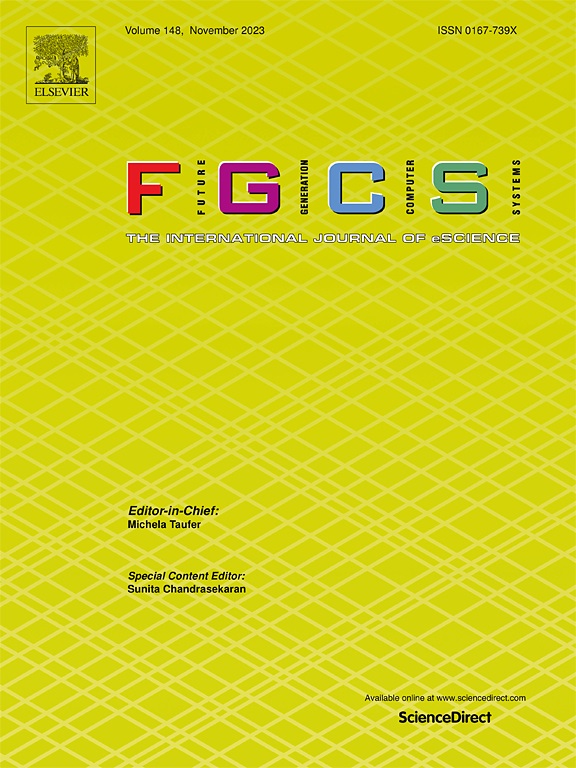Blockchain and digital twin empowered edge caching for D2D wireless networks
IF 6.2
2区 计算机科学
Q1 COMPUTER SCIENCE, THEORY & METHODS
Future Generation Computer Systems-The International Journal of Escience
Pub Date : 2025-01-02
DOI:10.1016/j.future.2024.107704
引用次数: 0
Abstract
Edge caching is considered a promising technology to fulfill user equipment (UE) requirements for content services. In this paper, we explore the use of blockchain and digital twin technologies to support edge caching in a Device-to-Device (D2D) wireless network, where each UE may fetch content from its own caching buffer, from other UEs through D2D links, or from a content server. A digital twin monitors and predicts the operating status of UE by storing crucial data such as the location, estimated processing capability, and remaining energy of each UE. To enable secure and credible trading between UEs, the blockchain technology is used to supervise transactions and constantly update UEs’ reputation values. We formulate an optimization problem to maximize an objective function that considers the content fetching performance, network lifetime and UE’s handover costs by optimizing the content placement and fetching strategies, subject to constraints on the UE’s storage capacity, the upper limit of serving other UEs, and latency requirements. To solve this complicated problem for a dynamic network environment, we propose a proximal policy optimization-based deep reinforcement learning framework. Simulation results demonstrate that our proposed algorithm converges rapidly and can efficiently maximize the rewards, network lifetime and content fetching gain while minimizing handover costs.
求助全文
约1分钟内获得全文
求助全文
来源期刊
CiteScore
19.90
自引率
2.70%
发文量
376
审稿时长
10.6 months
期刊介绍:
Computing infrastructures and systems are constantly evolving, resulting in increasingly complex and collaborative scientific applications. To cope with these advancements, there is a growing need for collaborative tools that can effectively map, control, and execute these applications.
Furthermore, with the explosion of Big Data, there is a requirement for innovative methods and infrastructures to collect, analyze, and derive meaningful insights from the vast amount of data generated. This necessitates the integration of computational and storage capabilities, databases, sensors, and human collaboration.
Future Generation Computer Systems aims to pioneer advancements in distributed systems, collaborative environments, high-performance computing, and Big Data analytics. It strives to stay at the forefront of developments in grids, clouds, and the Internet of Things (IoT) to effectively address the challenges posed by these wide-area, fully distributed sensing and computing systems.

 求助内容:
求助内容: 应助结果提醒方式:
应助结果提醒方式:


